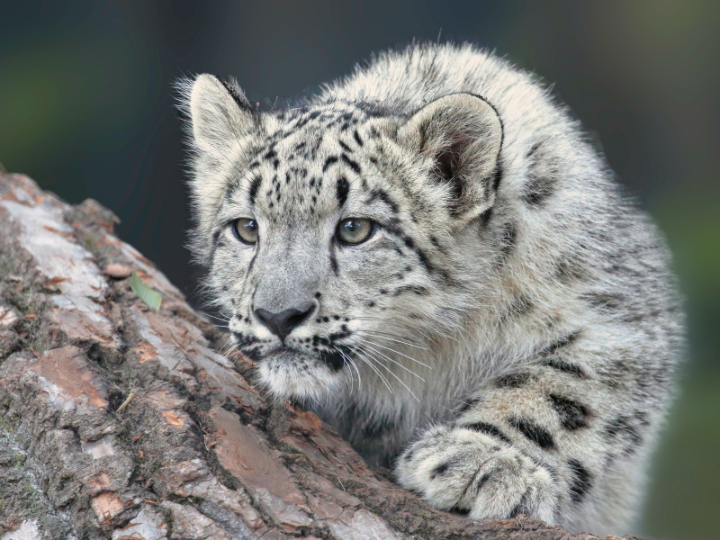by Hanlin Wang and Xinqing Lu*
Today is the United Nations World Wildlife Day. This has been celebrated on 3rd March annually since 2013 to highlight the importance and contribution of wild animals and plants to our lives and the health of the Earth. This year’s theme is Partnerships for Wildlife Conservation, underlining the role of business and finance in securing our wildlife and biodiversity-based resource.
According to WWF’s Living Planet report, we have seen an average decline of 69% in species populations since 1970. Although we have made huge progress in wildlife conservation and protection over the past century, we still face severe challenges, such as land-use change, ocean plastic pollution, illegal wildlife trading, climate change and habitat loss caused by unsustainable production and consumption patterns.
While businesses need to urgently avoid and reduce their negative impact, as called for in the Kunming-Montreal Global Biodiversity Framework, private-public partnerships in recognition of indigenous people and local community’s rights and livelihoods are also needed to achieve speed and scale for the restoration and regeneration of nature.
Here are some cases where business partnerships and innovative financial solutions are helping to protect the planet, ecosystems and wildlife.
Successful public-private partnerships deliver innovative solutions and build trust
Over the past century, we have made huge progress in wildlife conservation and protection. These milestones include the establishment of the world’s first national park in 1872, the birth of large wildlife conservation organisations since the 1950s and worldwide recognition of classified endangered species beginning in the 1970s.
However, even though conservation efforts have been successful in slowing down the speed of extinction in select cases, they often struggle to find a reliable source of funding to scale up the solutions and ensure the long-term success of conservation programmes.
Successful public-private partnerships can deliver innovative solutions and build trust across stakeholders. They bring in financial resources and know-how in project management for implementing valuable projects. Besides, mutual trust is built upon community engagement and communication with respect to land rights, which is critical to ensure consistency in conservation efforts in the long run.
Case study: business collaborates with government to save snow leopard in the Mount Everest area
Located within China, the Tibet Plateau is the world’s highest and largest plateau, it homes over 800 wildlife species. The snow leopard, also known as Panthera Uncia, is one of the rarest mammals and keystone species there. It is proclaimed as ’king of snow mountains.’ However, according to IUCN, the snow leopard is facing extinction with only around 7,500 living in the wild.
Vanke is a large Chinese residential real estate developer. In 2013, through the Vanke foundation, the company collaborated with government departments and specialised institutions in China’s Tibet and co-initiated the Mount Everest Snow Leopard Protection Plan for snow leopard protection in the Mount Everest area.
Based on this partnership, a conservation centre was founded as a public-private resource mobilisation platform dedicated to the protection of snow leopards in the region. With capital committed from Vanke, it expanded twice the monitoring area of snow leopards to 1,440 km2, accounting for 4% of the total area of ??Mount Everest. By 2021, Vanke had donated 11 million yuan (about $1.6 million) and a snow leopard protection network was set up in the Mount Everest area. Today, the monitored area for snow leopard protection has reached 3,000 km2, accounting for 8.9% of the Qomolangma National Nature Preserve.
An innovative financial instrument can help shift the existing conservation funding model
In December 2022, 196 parties committed to protecting 30% of the Earth’s lands, oceans, coastal areas and inland waters by 2030. The 30 by 30 ambition needs to be supported by a financial mechanism, but today we are faced with a global biodiversity financing gap, estimated at an average of $711 billion per year. In addition, a cost-effective way to measure the quality and progress is also crucial for the credibility and effectiveness of conservation efforts.
To address these challenges, we must explore the possibility of a novel financing mechanism that can be targeted and scaled. One such instrument is biodiversity credits, which can be used to finance actions for measurable positive biodiversity outcomes (e.g. species, ecosystems and natural habitats) through the creation and sale of biodiversity units with transparent governance and robust integrity principles, as is recognised in the Kunming-Montreal Global Biodiversity Framework.
Without serving as an offset for companies, biodiversity credits offer the possibility to deliver measurable ecological outcomes and long-term certainty to investors and biodiversity custodians. However, it needs to avoid the pitfalls seen in the carbon credit market. Specific considerations, such as fungibility, measurement, additionality and the social process of such voluntary biodiversity credit markets, need to be taken seriously.
Case study: protecting biodiversity in Australia measured by units of biological diversity (BDU)
Wilderlands is a platform that provides individuals and institutions with the possibility to contribute to the protection of biodiversity in Australia. It works with local conservation government institutions and landholders to consolidate resources and the impact of the work. This helps fund protection and conservation work.
Currently, Wilderlands manages four projects on the ground located in four different properties in Australia: grasslands in Victoria’s Riverina; wetlands in South Australia’s Meningie; tall forest in Victoria’s Otway Ranges; and woodlands near West Wyalong. Over thirty threatened species live within these four areas.
Within the projects, the public showed its interest and action to protect a small area of the land by purchasing a unit of biological diversity (BDU). Each unit represents a certain proportion of one square metre blocks and it is tagged with a specific geography. Participants and buyers can receive updates and monitor the conservation progress on the specified area of land.
* Early Careers Programme, Nature Action Agenda, World Economic Forum and Community Lead, Champions for Nature, World Economic Forum
** first published in:Weforum.org




 By: N. Peter Kramer
By: N. Peter Kramer
